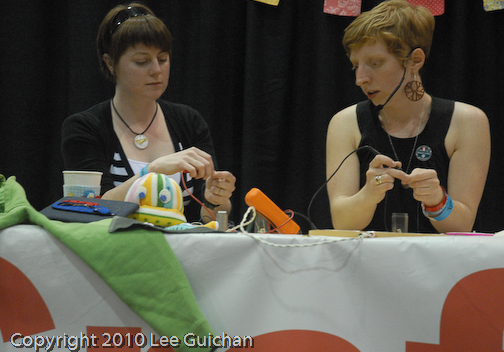Today I started packing my bags for my first trip out to San Francisco. I’m flying out Wednesday to visit a friend, do a little sight-seeing, and check out the Bay Area Maker Faire. It’s going to be a ton of fun! I’ll be armed with my camera, a camcorder, and lots of energy as I visit as many booths/demos as possible and try and meet some of the makers who have been inspiring my own projects.
Here are a few of the things I plan on seeing:
Shows
E-Textile: A Wearable Computing Fashion Show
Lynne Bruning, textile enchantress and soft circuit superstar, has organized the Maker Faire’s first wearable computing fashion show. I’ll be there to see some of these pieces in person, and if time allows, meet and talk to a few of the designers.
Anti/Surveillance Fashion Show
Noisebridge, a San Francisco hackerspace, is also putting together a show called Anti/Surveillance “a runway show that explores the role of and our relationship with surveillance in our society.”
Demos
eTextile Electronics Materials and Portable Lab w/ Adrian Freed
Conductive Fabric: Methods and Materials w/ Lynne Bruning
Intro to Soft Electronics
Learn about crafty conductive materials and how you can integrate them into your projects! CRAFT Associate Editor Becky Stern with special guest Angela Sheehan will show lots examples of conductive thread embroidery, soft switches, and other craft-tech goodies.
Becky was kind enough to invite me to show a couple of my projects during her demo – I’ll be bringing the Musical Jellyfish and the Temperature Sensing Tea Sleeve as examples of crafting with electronics.
Maker Booths
The Bespoken: Wearable Adaptive Technology by Lynne Bruning
Skirt Full of Stars by Shannon Henry
Kimono Monsters by Sarah Din & PoChen Lin
And of course there are a ton of other non-soft circuit projects and demos happening that I will be scoping out as well. I won’t be making a post during the faire, but I will probably be posting a few pics on my Twitter. Stay tuned!
Why is Maker Faire so exciting? Check out this video from last year’s faire:












































